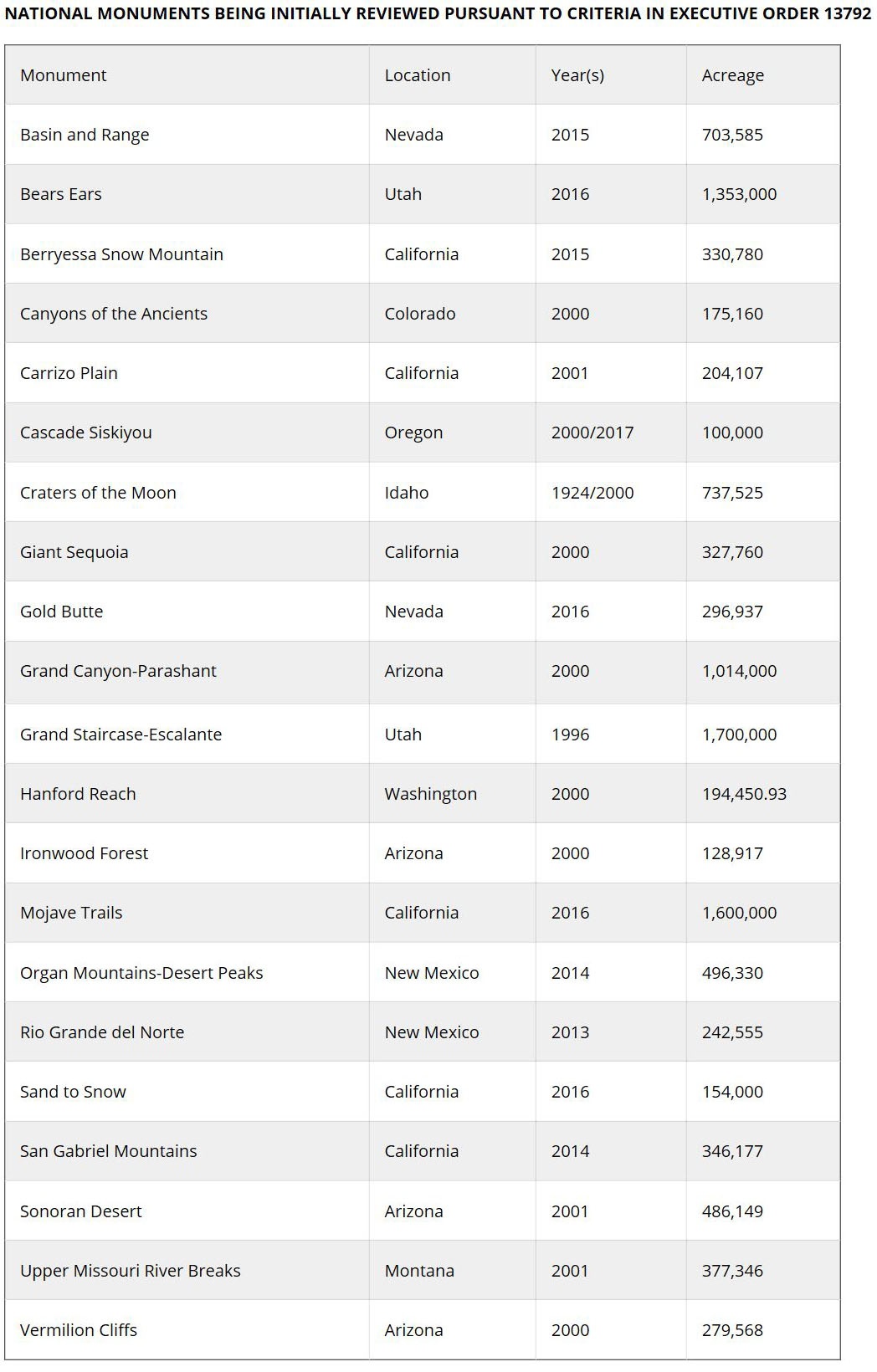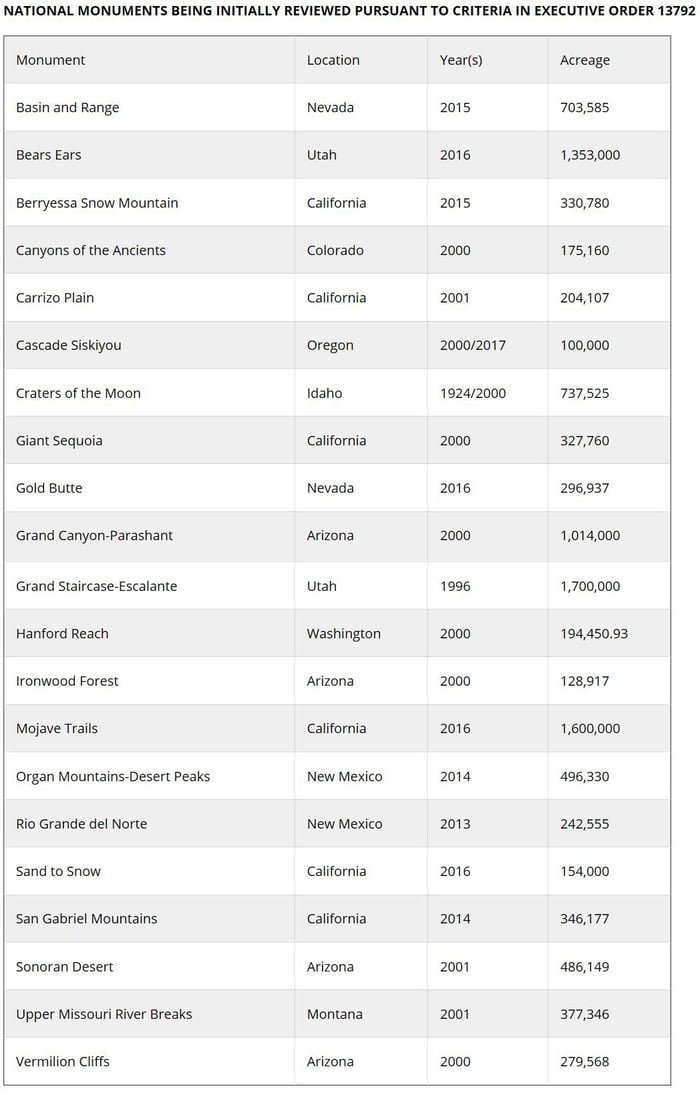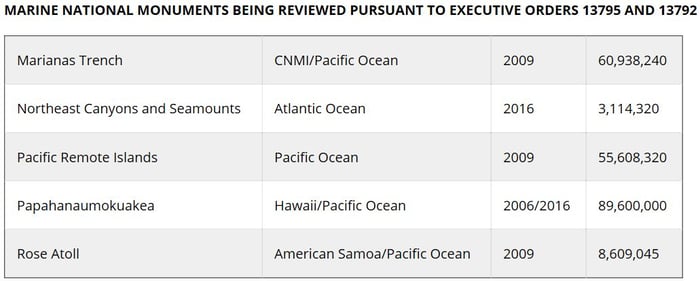4 min read
Trump Challenges Antiquities Act; May Benefit Forest Communities
John Greene
:
May 15, 2017

President Trump recently signed an executive order requiring a review of the oft-abused Antiquities Act, which is good news for millions of Americans in rural communities from Maine to Hawaii. The Subcommittee on Federal Lands has just heard testimony on the consequences of Executive branch overreach of the Antiquities Act, which detailed the impact such reckless abuse of an executive privilege can have on American families and working communities. President Trump has referred to the Act as a “massive federal land grab,” noting that “It’s time to end these abuses and return control to the people.”
The original intent of the Antiquities Act was to protect historic structures with inherent social and cultural value; it was enacted in 1906 out of legitimate fear that Native American ruins on federal lands in the southwest would be destroyed and/or looted. Today, the Antiquities Act is primarily a means for presidents to single-handedly cordon off vast areas of land (and water), securing their legacies with special interest groups and environmental organizations. Most recently, President Obama designated more individual national monuments than any president before him; together, monuments established or expanded by President Obama cover more than 550 million acres.
What does any of this have to do with the forest products industry and forest-centric communities across the US? One of 22 monuments that will be subject to review is the 100,000-acre Cascade-Siskiyou National Monument—an area that is representative of the already-constrained conditions under which the forest products industry in the Pacific Northwest (PNW) operates. Many of these areas have been designated without significant local input or support, which has resulted in countless families in rural communities—often dependent upon the local resources for economic opportunities—being forced to relocate or being forced out of work.
While much of the reactionary legislation of the 1990s that has contributed to the decline of the forest products industry in the PNW is unlikely to be overturned, adding new national monuments on already-limited forestland where logging is permissible only further erodes the regional industry.
Testimony from the Forest Industry & Beyond
At the recent Subcommittee on Federal Lands hearing, Subcommittee Chairman Tom McClintock (R-CA) said, “These designations were often imposed in spite of local opposition, without consultation with Congress, or the state or local governments effected, and without regard for the economic damage these designations have had on surrounding communities.”
An example of this blatant disregard for local communities can be seen in the recent enlargement of the Cascade-Siskiyou National Monument, which spans northern California and southern Oregon forests and was expanded during the final days of the Obama administration. Siskiyou County Board of Supervisors chairman Michael Kobseff said the county was officially opposed to the expansion in early 2017, just as it had been to the original designation by Bill Clinton in 2001 because of its negative effect on firefighting efforts and property rights. “It creates a more volatile environment with the government on your back doorstep,” Kobseff said. “It’s not a win for liberty.”
Knox Marshall, Vice President of the Resources Division at wood products manufacturer Murphy Company in Oregon, testified that the Cascade-Siskiyou expansion removed 40,000 acres of land managed by the Bureau of Land Management that was designated by Congress in 1937 for permanent timber production. He added that the move will jeopardize 400 jobs in Murphy’s four Oregon manufacturing plants, and noted that the expansion has “devastated the social fabric of our rural communities and crippled county finances.”
“Douglas County in Oregon, for example, has recently closed its entire public library system because timber sale revenues that previously funded those libraries and a robust set of other public services have largely disappeared,” Marshall added.
Maine Governor Paul LePage also outlined the adverse impacts resulting from Obama’s August 2016 designation of Katahdin Woods and Waters National Monument, including economic losses to the forestry industry and public access barriers to trails in the region. Last year, LePage signed a law requiring state legislative approval for national monuments, which he said the Obama administration simply ignored when making the designation. “Not long after President Obama designated the monument, Maine residents started to feel the negative effects of having the federal government as their new master,” LePage stated.
Director of the Utah Public Lands Policy Coordinating Office and former head of the US Bureau of Land Management Kathleen Clarke discussed the devastating economic consequences for Utah communities after President Clinton designated 1.7 million acres in Utah as the Grand Staircase Escalante National Monument in 1996. “Families that have lived for generations in affected communities find their families torn apart due to lack of employment opportunities for the next generation. Populations are declining. In the twenty years since the creation of the Grand Staircase, school enrollment in Escalante has gone from 150 to 57 students,” Clarke said.
The Antiquities Act abuse also hurts commercial fishermen; Pacific Legal Foundation (PLF) is representing a number of fishing groups throughout the northeast challenging the new monument in the Atlantic Ocean off the coast of New England. The case argues the monument is not only unlawful, but its size undermines sustainable fishing and threatens to weaken conservation efforts. “Former President Obama was the king of Antiquities Act abuse, invoking it more times than any prior president and including vastly more area within his designations than any predecessor,” said PLF attorney Jonathan Wood. “Our lawsuit is intended to rein in abuse of the Antiquities Act and underscore that it is not a blank check allowing presidents to do whatever they want.”
Public Comment Period
The Department of the Interior recently announced the first ever formal public comment period for members of the public to officially weigh in on monument designations. Secretary Ryan Zinke and President Trump both strongly believe that local input is a critical component of federal land management, and the Department has released a list of monuments under review by the President’s Executive Order.
 Source: U.S. Department of the Interior
Source: U.S. Department of the Interior

Source: U.S. Department of the Interior
 Source: U.S. Department of the Interior
Source: U.S. Department of the Interior
Comments may be submitted online at http://www.regulations.gov by entering “DOI-2017-0002” in the “search” function, or by mail to: Monument Review, MS-1530, U.S. Department of the Interior, 1849 C Street NW, Washington, DC 20240. The Department will soon publish a notice in the Federal Register officially opening the public comment period, and written comments relating to all designations subject to executive order must be submitted within 60 days of that date.
Certain national monuments have been scaled down over the years by presidential order or by Congress, but no president has ever attempted to eliminate certain monuments altogether. If President Trump continues to push the matter, it will most likely be decided in court.
Pending public comment response, Interior Secretary Ryan Zinke has been directed to issue a final report within 120 days. Any move to abolish existing monuments will have to wait until the report is finalized. Experts say that even if he recommends the scrapping of national monuments established under the Antiquities Act, it will not happen quickly.





